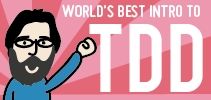Promoting Working Together With Value Streams
Summary
Mapping your work system’s value stream doesn’t only give you insight into how to reorganize the work, but it also promotes true collaboration by aligning co-workers against a common problem, rather than pitting them against each other.
Most humans need to think both abstractly and concretely; we often switch without realizing it. As a result, when we start to think freely about what’s happening at our jobs, even when we think we’re contemplating abstract obstacles (“it takes too long to gather feedback about pull requests”), we often think about the specific people who “cause us problems”. This is an aspect of switching from abstract to concrete thinking. Sadly, this intensifies personal blame, which both strains our relationships and leads us towards learned helplessness: “people don’t change, so there’s nothing we can do until they’re gone”.
Mapping the value stream of your work system helps shift focus away from the people towards the activities themselves. When I do this with clients, I encourage them to imagine the work system from the point of view of the pieces of work traveling through it, which orients their thinking towards activities, rather than individuals. This not only reduces the likelihood of blaming people for obstacles, but it also subtly transforms thoughts of “me against them” into thoughts of “us against the system”. It rallies people around common obstacles and encourages working together to “defeat” the system. This makes mapping the value stream more than merely a specific way of modeling bottlenecks in a work system.
Win-win.
Cynefin has entered the chat
At the same time, some folks worry that by mapping the value stream, we’re applying Complicated thinking to a Complex domain, which ignores key confounding factors that we truly need to consider. I understand their concern and even share it; however, I note two things:
Most work systems are organized such that even a Complicated approximation, such as a linear value stream map, is enough to suggest significantly-helpful improvements. Applying Complex thinking is often an optimization that almost always helps but might trigger resistance, because it’s generally harder to do well. (Sometimes, Complex thinking leads us to feeling paralyzed by choice. There’s always a more-important feedback loop.) If you want a more-powerful tool, perhaps Eli Goldratt’s concept of Inherent Simplicity would fit even better, but most people need an easier place to start making progress. Most people find it easier to start by learning to map a value stream, then using the resulting increase in slack to facilitate bigger-picture thinking.
Most groups find themselves in a situation where they’d benefit more from promoting collaboration more than they’d risk by approximating their work systems as Complicated instead of treating them as Complex—and by a wide margin. Cultivating an environment where collaboration happens spontaneously is generally more urgent than deciding once how to adjust the flow of work through the people involved. Increasing collaboration creates more opportunities—and more-powerful ones—to improve than merely rerouting tasks.
You can learn to map value streams by reading a few introductory articles, but if you’d rather invest in the guidance of a trusted adviser, contact me and we’ll figure out what you need.


